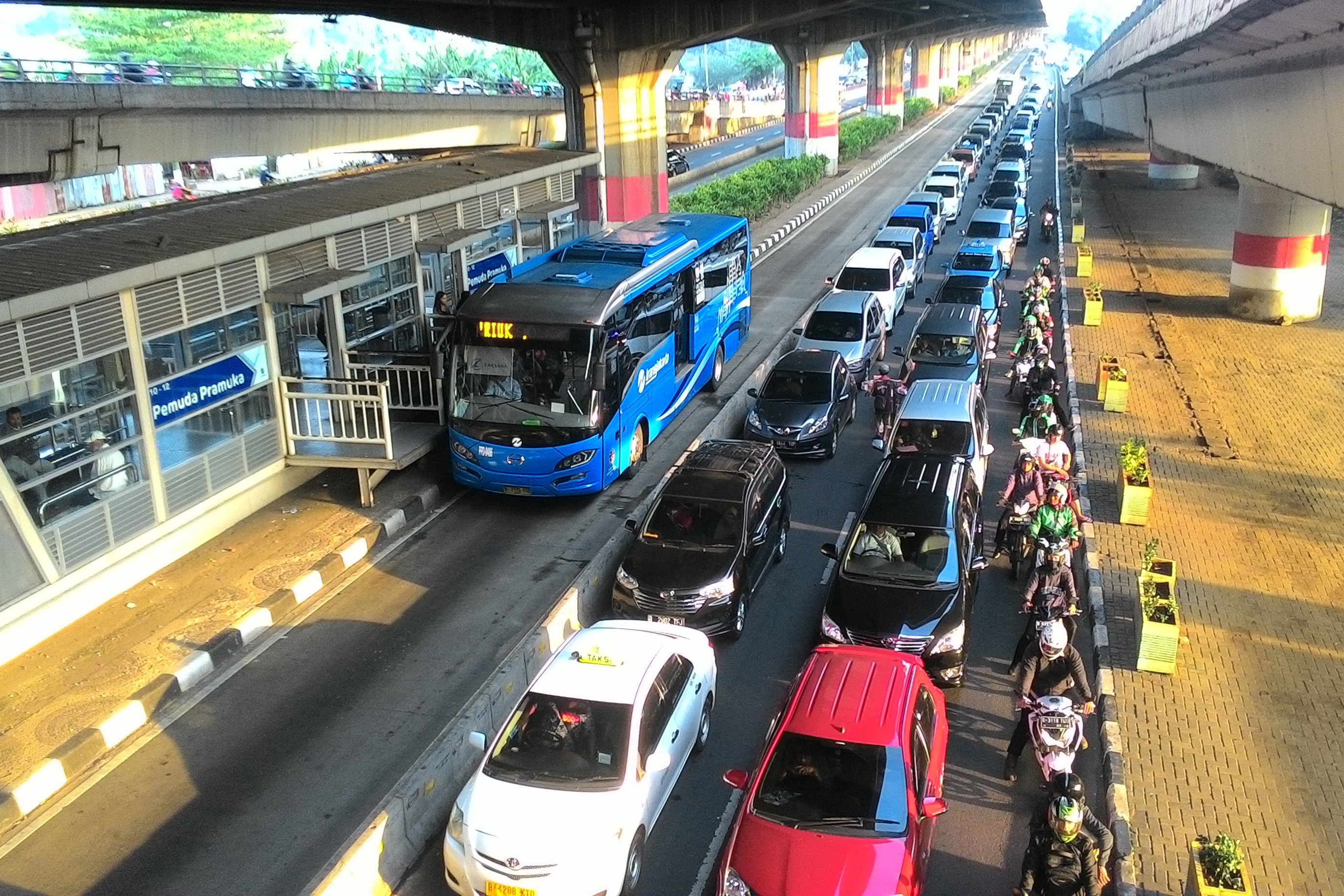|
Greater Jakarta Integrated Mass Transit System
The Greater Jakarta Integrated Mass Transit System is an integrated transport network that primarily serves the area of Jakarta metropolitan area and surrounding areas. The system commenced operations in December 2011 with the introduction of commuter rail service on the existing rail between Jakarta and satellite cities. The system have since expanded and currently consists of 11 fully operating rail lines in a radial formation; five commuter rail lines, one airport rail link line to the Soekarno Hatta International Airport's (SHIA) Terminal 1, Terminal 2, and Terminal 3, four rapid transit lines, fourteen bus rapid transit line and one high speed rail line to Bandung. The system encompasses of grade-separated railway with 371 operational stations. History KRL Commuterline The modernization of the commuter railway system, begin in 2011. Network operations were greatly simplified from 37 Point-to-point transit, point-to-point service patterns into six integrated lines (known ... [...More Info...] [...Related Items...] OR: [Wikipedia] [Google] [Baidu] |
Jak Lingko
Jak Lingko (formerly OK OTrip) is a public transport integration program designed to integrate payment and physical connection between transport modes in Jakarta. The integration includes BRT, Commuter rail, Light Metro, MRT, LRT, Airport rail link and local angkot (Mikrotrans). History ''One Karcis One Trip'' (OK OTrip, English: One Ticket One Trip) was initially launched in 2017. It was one of Governor Anies Baswedan's campaign promises. In September 2017, it was announced that Anies's program, as implemented by TransJakarta, will still be named OK OTrip, and that this won't be a problem for the Audit Board of Indonesia. The card caps fares at IDR 5,000 for up to 3 hours on transfers for smaller participating local bus services to or from the TransJakarta BRT network, and aims to reduce transportation costs by 30 percent. In 2018, the program was rebranded as ''Jak Lingko'', where "Jak" refers to Jakarta and "Lingko" deriving from the name of the interconnected irrigation n ... [...More Info...] [...Related Items...] OR: [Wikipedia] [Google] [Baidu] |
TransJakarta BRT Corridor 6 Icon
Transjakarta (stylised in all-lowercase, often erroneously called Busway, sometimes shortened as TJ and branded as TiJe) or Jakarta BRT is a bus rapid transit (BRT) system in Jakarta, Indonesia. The first BRT system in Southeast Asia, it commenced operations on 15 January 2004 to provide a fast public transport system to help reduce rush hour traffic. The system is considered Jakarta's premier public transit offering. The buses run in dedicated lanes (busways), and ticket prices are subsidised by the regional government. Transjakarta has the world's longest BRT system (251.2 km in length), which operates about 4,300 buses. Transjakarta aims to have 50 percent of its fleet be electric buses by 2027. By 2030, the aim is for the entire Transjakarta ecosystem to use electric buses. As of November 2023, it serves an average of 1.134 million passengers daily. Transjakarta system is operated by municipally-owned company PT Transportasi Jakarta. However, most of its fleet is operat ... [...More Info...] [...Related Items...] OR: [Wikipedia] [Google] [Baidu] |
TransJakarta BRT Corridor 5 Icon
Transjakarta (stylised in all-lowercase, often erroneously called Busway, sometimes shortened as TJ and branded as TiJe) or Jakarta BRT is a bus rapid transit (BRT) system in Jakarta, Indonesia. The first BRT system in Southeast Asia, it commenced operations on 15 January 2004 to provide a fast public transport system to help reduce rush hour traffic. The system is considered Jakarta's premier public transit offering. The buses run in dedicated lanes (Bus lane, busways), and ticket prices are subsidised by the regional government. Transjakarta has the world's longest BRT system (251.2 km in length), which operates about 4,300 buses. Transjakarta aims to have 50 percent of its fleet be electric buses by 2027. By 2030, the aim is for the entire Transjakarta ecosystem to use electric buses. As of November 2023, it serves an average of 1.134 million passengers daily. Transjakarta system is operated by municipally-owned company PT Transportasi Jakarta. However, most of its fleet ... [...More Info...] [...Related Items...] OR: [Wikipedia] [Google] [Baidu] |

